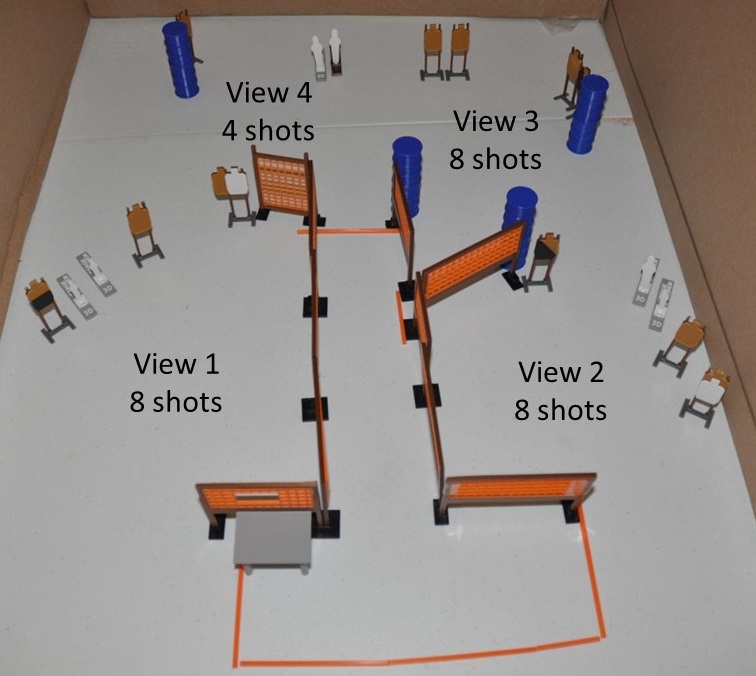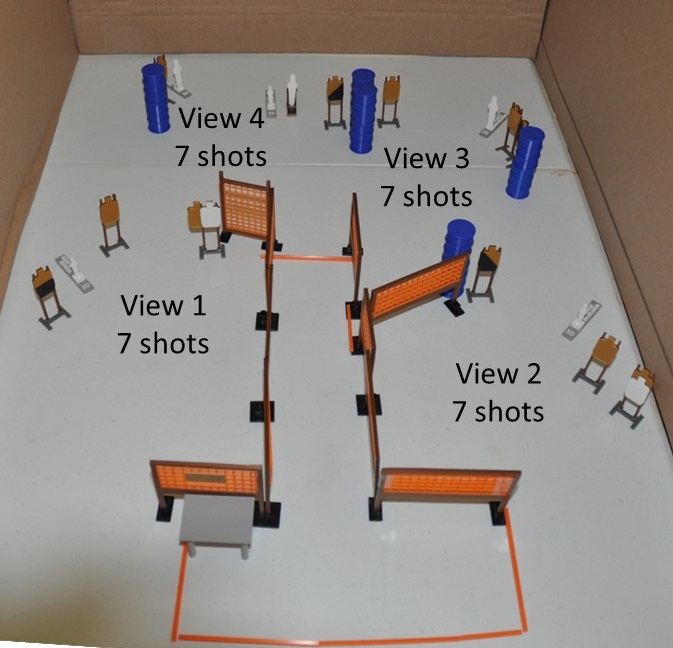One of the glaring issues is the recent trend of shooters going to Single Stack minor instead of shooting major. While some would say this is caused by the proliferation of high round count courses at all levels of matches especially Level II and Level III matches as the primary factor I think they are incorrect. Instead, I see course designs where Single Stack major are at a strong disadvantage.
It is clear that if the stages are designed to require 8 rounds in every position, especially with steel it can sway some competitors to go minor because the extra 2 rounds may prevent having to do a standing reload if they take a miss or two. I feel that good stage design can overcome this perceived advantage.
So, let’s look at the rules of course design and see what they say. Under 1.2.1 et al, you “must not require more than 8 rounds from any location or view, nor allow a competitor to engage all the targets in the course of fire from any single location or view”. Seems pretty simple right?
So, let’s look at couple of examples of a 28-round course of fire. Under the rules this course of fire must have a minimum of four locations or views to be legal. Easy math 3 times 8 only equals 24 rounds, therefore, you need at least one more location or view.
In the first course of fire you have three positions that require a minimum of 8 rounds each that are not available anywhere else in the course of fire and one that has 4 rounds not available anywhere else. The breakdown is 11 paper and 6 steel. In a course like this, the minor Single Stack has either 10 or 11 rounds depending on the start status giving the competitor the edge if they have a miss or two on steel.

On the second course of fire the locations should have no more than 8 rounds if they are all paper and either 6 or 7 rounds if there is steel. Ideally the first location should be limited to 7 rounds and if the next position is 8 rounds due to being 4 paper for example, the next position should be no more than 6 rounds. That leaves the last position to be a minimum of 7 rounds.

Now this not cookie cutter type discussion, i.e. do this and all is well. The stage designer needs to be aware of a couple of realities in course design when dealing with Single Stack major and minor. First, if the stage uses an unloaded start you need to be aware that forcing the competitor shooting major to go the slide lock in the first location gives a minor shooter a huge advantage. Second, when setting up your locations/views remember to make sure that the combination of the two locations/view requires more than 11 rounds. This may force both the major and minor shooters to make the same number of reloads.
A few of rules we used to use for the Single Stack Classic stages:
- No more than seven rounds in any location or view that has steel.
- The larger the number of steel targets, the more heavily weighted it is to a minor competitor because of the higher capacity. In a longer course, the extra 2 rounds a minor shooter has can sometimes save a standing reload or having to short load. For example, having to fire 2-3 rounds and then reload again to get back to 9 rounds in the gun.
- The tighter the shots on paper the more minor friendly the target is. This is due to their less recoil and the tendency to go for the A-zone hits. 5 points is 5 points.
- On more wide-open targets, especially at distance a C or D hit from a minor gun can cost points that add up pretty quickly.
Of course, when we design stages we want to give options for our competitors. Even if we design courses that are Single Stack major friendly, we can allow options. Remember, the key word is requiring more than 8 rounds. As long as the design allows some of those extra shots are available somewhere else in the stage it can be legal. However, try to be as balanced as possible and avoid the situation where a minor Single Stack competitor will be able to skip a reload or location while you are forcing the major competitor to potentially shoot to slide lock in every position.
Several years ago, I shot a match where I stated right off the bat that the designer was a Production shooter. Everything was 10 round friendly while still being legal. In several cases, there were locations that had 10 shots but were technically legal because they were two separate views. I ended up having to use six magazines to shoot 30 rounds on one stage and it was not because I was missing. I ended up pretty frustrated by the end of the day.
Therefore, I strongly suggest that stage designers should keep in mind the capacity restraints in Single Stack major. It is not hard to design stages that are fun, fair and Single Stack major friendly. At least don’t go out of your way to make them unfriendly. I have a lot of 230 grain SNS bullets I would love to shoot at your matches.